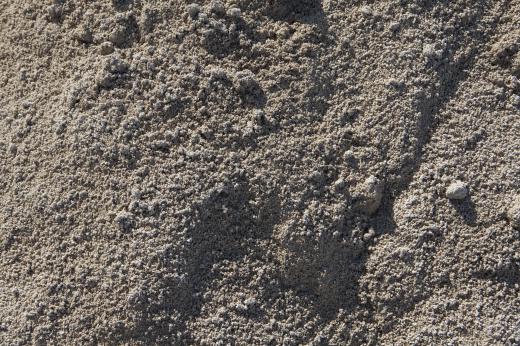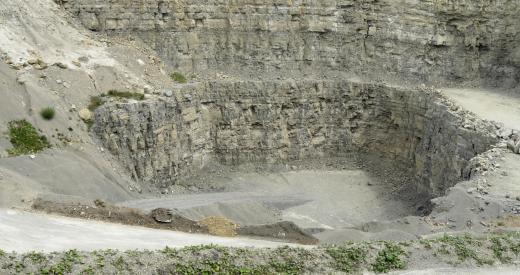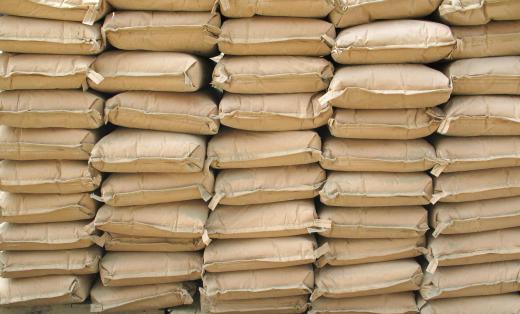The cement manufacturing process involves several key steps, including preparing the raw materials, grinding the materials together, heating the newly formed clinker in a kiln, and finishing the cement with fine grinding. Some of the main ingredients used to make cement include limestone, clay, shale, iron, and sand. Different manufacturing techniques will use either wet or dry grinding, but each cement manufacturing process will culminate in heating and fine grinding to finish the product.
Preparing the raw materials is often the first step in the cement manufacturing process, and involves mining the limestone or obtaining safe industrial waste products. Drilling, blasting, and crushing machinery convert mined limestone to fragments about 0.39 inches (about 1 cm) in diameter, after which it is stored until needed. Crushing practices will sometimes be used on the other materials as well, especially if they contain large or irregularly sized fragments.

Grinding is the next step in the cement manufacturing process, and it can occur in either wet or dry forms. Wet grinding involves combining all of the materials in a mill with water and grinding it into slurry. In contrast, dry grinding processes combine and grind the materials without water, creating a substance known as kiln feed. Both types of grinding will yield material that contains an average particle size of about 75 micrometers. After each process, the materials are further mixed for proper homogeneity and placed in storing units.

Heating occurs next, and it takes place in a rotary kiln that is fired at high temperatures. The kiln heats the clinker, the name for the dried material formed after the grinding process, until it reaches upwards of 2732°F (about 1500°C). Afterward, the material is sent to a clinker cooler where the temperature lowers to a reasonable level, at which point the material can be stored once again.

The cement manufacturing process is completed when the cooled clinker is ground once again in a rotating finishing mill. A combination of gypsum and limestone will usually be added in small amounts to the heated cement during this last grinding step, and coloring agents can also be added here. The fineness of the finished particles will vary according to individual preferences, and the cement can reach a level of fineness where it will travel through liquid sieves. Completion of the finishing step means that the cement is ready to be packaged and distributed to builders and consumers.
